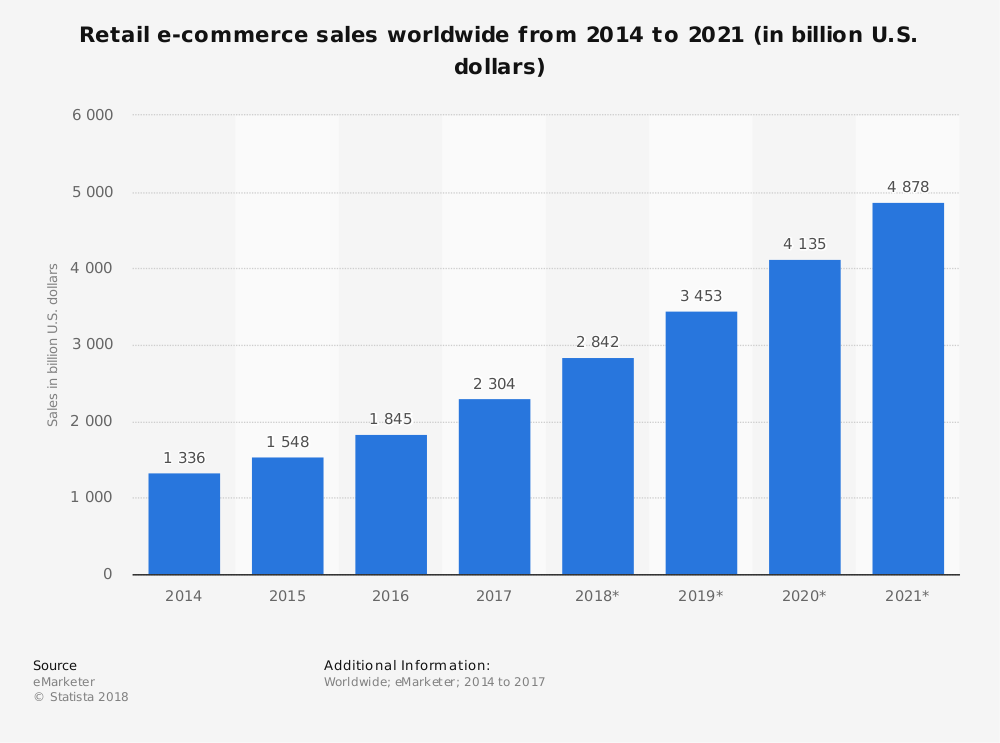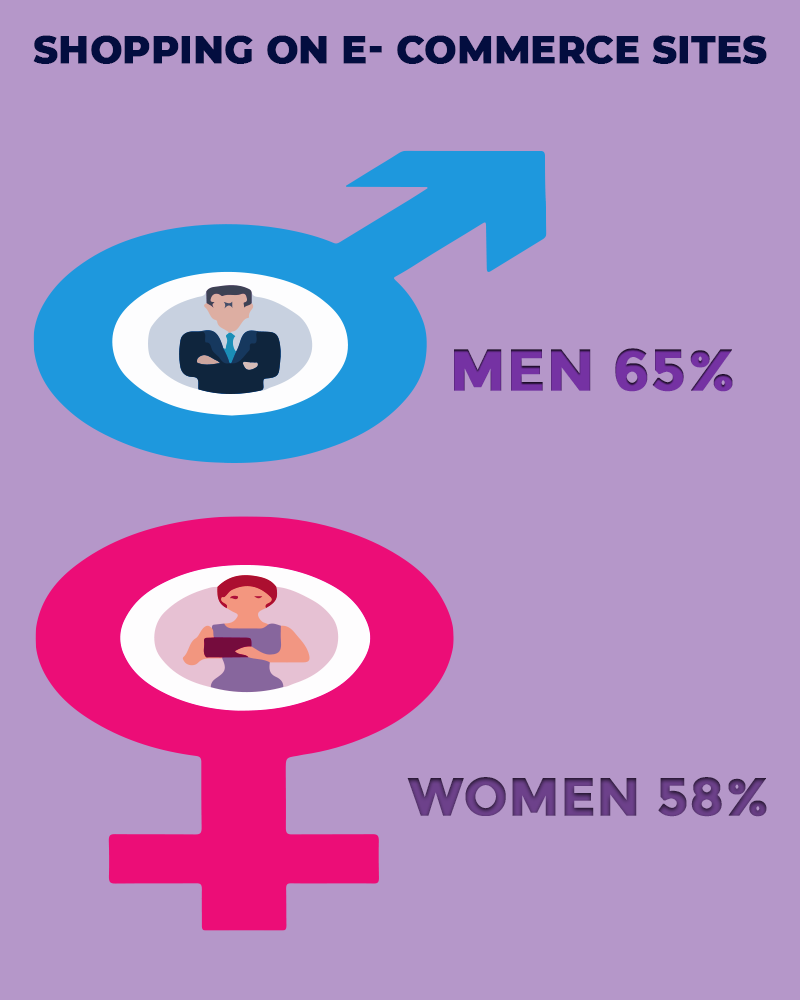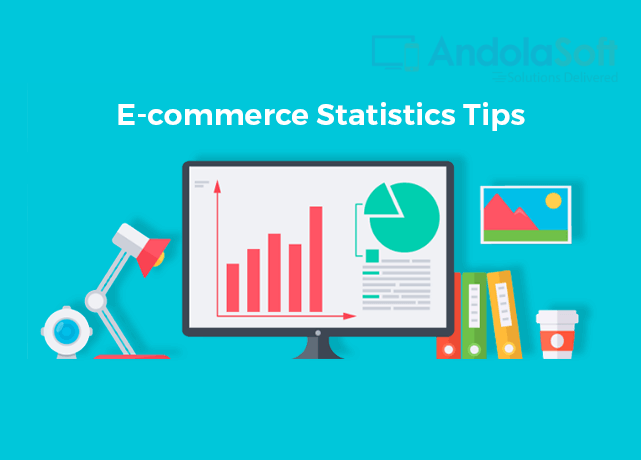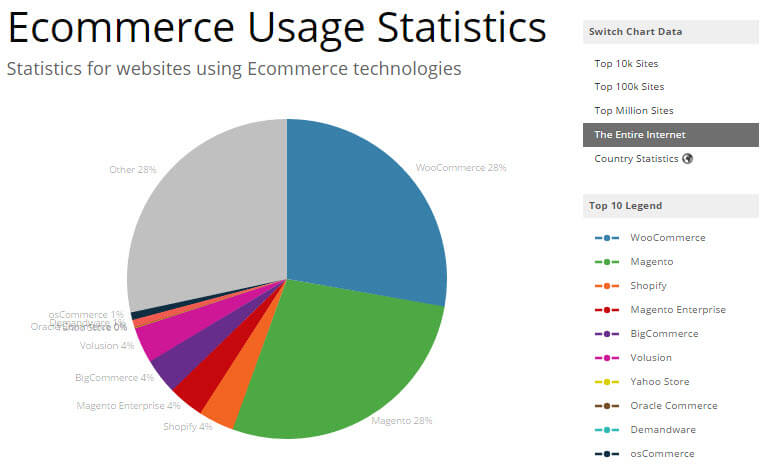Owning your own eCommerce business? Then this is a must-read article for you.
Whether you own your an online business or in-store one, you should be aware of the current e-commerce trend and where the market is going in-order to expand your business and get more sales.
The below-mentioned points will update your pre-existing knowledge on e-commerce and will remove the pre-existing notions that you have.
On the whole, it will help strengthen your strategies for e-commerce marketing and in expanding your business.
E-commerce Statistics Tips
In order to study the E-commerce trend and get your business going accordingly, you should have knowledge about the following points
- General Facts
- Online Shopping trend
- Mobile-based e-commerce statistics review
- Behavioral study of the shopper
General facts
Here are a few general facts that you should take into consideration while developing e-commerce strategies for your business.
- The total value of global retail e-commerce sales
- More than 10% of global retail sales will be covered by e-commerce
- There are about 12-24 million global e-commerce sites
- Credit cards are the most preferred form of payment
The total value of Global retail e-commerce sales

Image source: Statista
E-commerce statistics report a steady rise in global e-commerce sales. And this rise is speculated to reach over $4878 billion in 2019. (Source: Statista)
More than 10% of global retail sales will be covered by e-commerce
There is constant and steady growth in the field of e-commerce retail sales.
While e-commerce accounted for only 7.4% of total retail sales in the year 2015, it has shown a remarkable increase and accounted for more than 10% of e-commerce sales in the year 2019.
More than 12-24 million global e-commerce sites
There are a huge number of e-commerce companies in the world. Actually, there is no particular definition of an e-commerce company.
There are companies which have a business online and sell their products on their website.
There are other e-commerce companies like Amazon, Flipkart, Alibaba, etc. and companies who have their site but do not really sell anything online.
All these companies altogether account for about 12-24 million global e-commerce sites.
Credit cards are the most preferred form of payment
According to a survey most of the online shoppers prefer credit cards as their mode of online payment.
This is followed by electronic payment with sites like PayTM and then follows payment with Debit cards and cash on delivery.
Online shopping trend
As per the notice, here are the few shopping trends that are observed in the shoppers throughout the world.
- Men shop more from e-commerce sites than women
- The most active online shoppers
Men shop more from e-commerce sites than women

Generally, it is observed that 65% of males shop more from e-commerce sites as compared to their female counterparts which are 58%.
The main reason behind this being the products preferred by men like luxury goods and electronic items are on high value and the goods preferred by women like cosmetics, jewelry and cooking items are listed as low-value items. (Source: Adglow)
The most active online shoppers
Opposite to the popular belief, it is observed that not the Millennial generation ( people born between 1982-2000) but Generation X (people born in between 1966-1981) are more frequent online shoppers.
The main reason behind this is that these people have become financially stable by now and are more stable in their income.
Mobile-based e-commerce statistics review
Nowadays the mobile versions of the e-commerce sites are also available. People download these apps on their mobile phones and then do shopping from them.
This is called m-commerce. Here are the m-commerce statistics that a businessman should consider.
- Increase of mobile e-commerce
- Global mobile shopping highest in the Asia-Pacific region
- The rise in online shopping mobile
Increase in mobile e-commerce
Interestingly shopping on mobile has become the most important part of e-commerce. Do you know that by 2021 m-commerce will have a share of almost 73% in the e-commerce market? This is a massive rise in itself. China being the major country behind this, India and other countries follow close behind. (Source: Statista)
Global mobile shopping highest in the Asia Pacific region.
The improved economics and infrastructure in mobile shopping have made Asia Pacific region for m-commerce. Big e-commerce brands are getting very good opportunities from the Asia-Pacific market.
The rise in online shopping from mobile
Between the years 2016 and 2017 the US market so a recorded rise in online shopping with the help of smartphones.
The increase ranged from 8% to 15%. While there was a drop in online shopping from desktops from 78% to 63%. Which shows that m-commerce is becoming an integral part of e-commerce share. (Source: Statista)
Behavioral study of the shopper
In order to expand your business through e-commerce and planning business strategies, you should also need to track the behavior patterns of the shopper. Here are a few pointers to follow
- The percentage of conversions for potential customers
- Global cart abandonment rate
- The effect of a slow website
The percentage of conversions for potential customers
According to observed trends, only 2% to 3% of e-commerce website visit convert into a purchase. In order to improve your business, you need to have good content on your site and smooth check out process.
Global cart abandonment rate
Many times it is observed that people add the product to the shopping cart of an e-commerce site and then drop out at the end moment.
The statistical study shows that about 75% of shoppers drop out at the time of purchase. The main reason behind this is the added shipping cost, the unclear payment instructions, and unresponsive payment gateway sites.
The effect of a slow website
The loading time of your website pages plays an important role in retaining the potential customer on your site. If your site is slow you may lose the customer and he or she will drop out.
These are the e-commerce statistical analysis tips that help you in building your business strategies.




